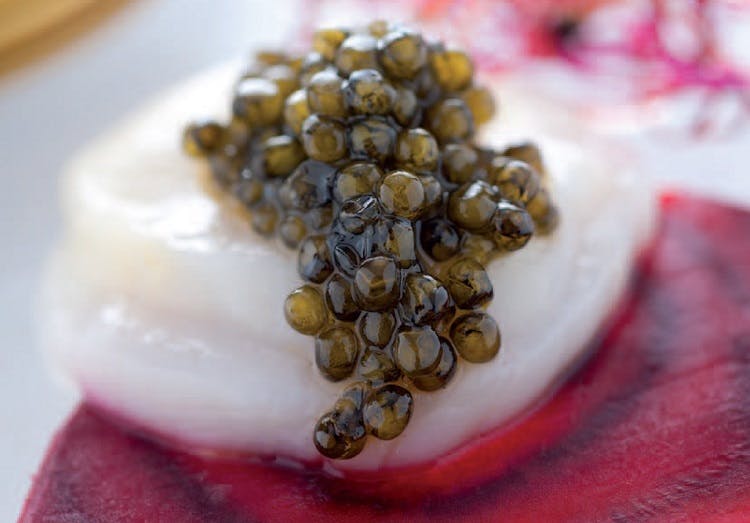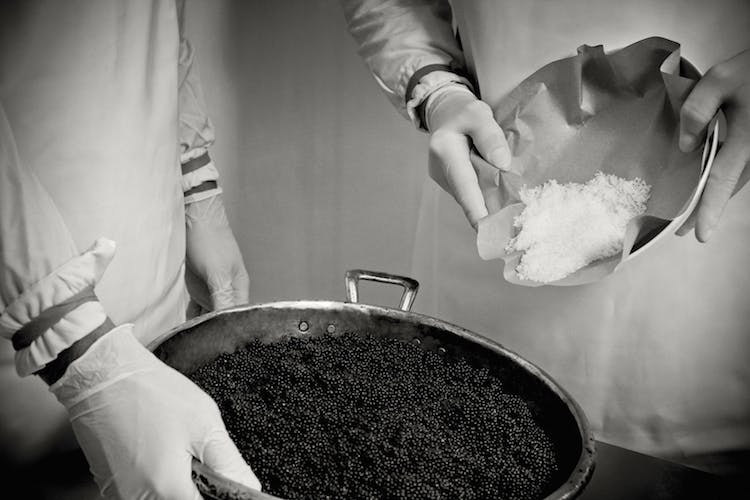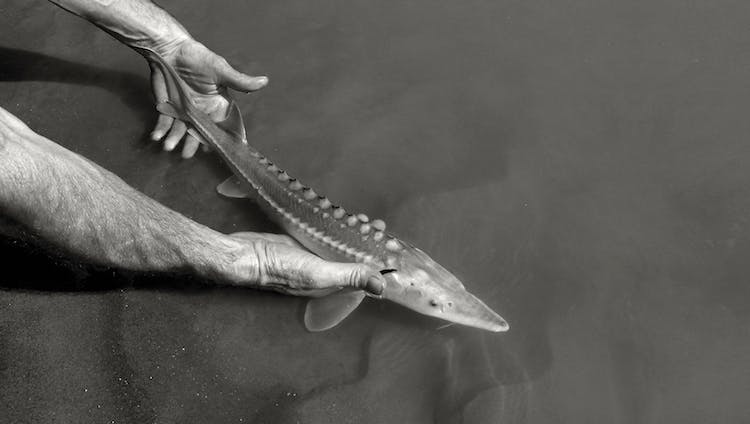
Caviar has been around for thousands of years. During ancient Roman times, fish roe was considered a by-product of sturgeon meat. However, nowadays, the tables have turned, and caviar has become the sought-after delicacy thanks to its rich, buttery flavors.
This increased demand for caviar has caused sturgeon fish populations to decrease and become an endangered species. Curious to learn more about this phenomenon, Eataly Magazine editors went behind the scenes to interview the team at Calvisius, an Italian producer dedicated to making high-quality caviar following sustainable practices.
In a nutshell, what is sustainable caviar?
For us, sustainability is a way of implementing practices that integrate all the business needs of the company and take the best possible care of the animals. We recreated farming conditions and an environment for the fish as close as possible to their natural environment. As a result, this gives us a higher quality product. We also consider how the future of both the business and the fish will be impacted.
What’s the farm like where Calvisius raises its sturgeon and produces caviar?
We're located in Calvisano, a typical Italian farm town of the Po Valley in Italy's northern region of Lombardy. The farm started initially to resolve thermal issues of cooling water that was coming to a local steel plant. A system of pipelines was created to cool down the waters of exhaust by contact with water pools, thus allowing the water to reach the proper temperature to be reintroduced into the environment for irrigation purposes and farming. The result was a solution to the heating problem, but it also created the perfect environment for raising sturgeon. It's kind of a mini-ecosystem that results in the creation of the caviar!
How do your sustainable farming methods impact flavor and quality?
The fish are raised in the purest water possible. We use fresh spring water from local rivers. The feed that is given to the animal is all organic and reproduces the types of algae that live naturally where sturgeon used to originally live. And the environment itself is as close as possible to their natural environment.
Sturgeon are a very fragile fish and also very temperamental. If the sturgeon are scared or stressed out the quality of the caviar is negatively affected - or they don't produce caviar at all.

What are the key points of differences between Calvisius’ production compared to other companies?
First and foremost, our product comes straight from the source - from a fully traceable farm that controls the whole production process from start to finish. This is different from other caviar products, which sometimes come from brokers who have less control over the quality of the product. The second thing I would highlight is the purity of the water that our fish live in. A lot of caviar farmers in other countries don't have to abide by the standards that the Italian government imposes, such as limiting the use of hormones and additives and ensuring proper label transparency and species identification. The third important difference is the freshness of the product. Some caviar companies heat treat their caviar to extend its shelf life. Our caviar is fresh, untreated and we use the Malossol method, so it's only salt and sturgeon roe. We have a maximum of 3.4% salt content, while other caviar producers allow anywhere between 4 to 12%. Because our product is so fresh, we don't need to cover up the defects by using more salt.
What has Calvisius done to help endangered sturgeon fish?
By farm raising endangered species, we were able to repopulate some of the sturgeon stock worldwide. We were even able to save an Italian species native to the Adriatic Sea.
Can caviar come from other types of fish besides sturgeon?
No, there's a lot of misinformation precisely on this point. By definition, caviar is simply sturgeon roe and salt. Anything else from other fish is considered fish roe. In Russian culture, they used to talk a lot about black and red caviar, but technically "red caviar" is trout or salmon roe.
Is there a season for caviar?
It depends. We have to respect the natural environment and lifecycle of the fish. Up until 5 years of age, scientists don't know if a sturgeon is female or male. When that moment comes, all of our fish go through a medical examination - so they even have medical care! After that, the females are separated from the males.
Generally, the extraction season is between November and April. Once the roe is extracted from the fish, it's washed, prepared, and salted. After that, it takes two to three months for the curing process to be finalized.

So then, what happens to the rest of the fish?
Every part of the sturgeon gets used, like sturgeon meat which is delicious! Some chefs in Italy are working with us to help make it popular again because it's such a cool meat. In Italy, it's served as both fresh and smoked. We also smoke sturgeon and other fish, which is another part of the Calvisius business.
How long can a sturgeon fish live?
It varies from species to species. That's also what determines the monetary value of the different species of caviar. You go anywhere from 6 to 7 years for Siberian sturgeon, 13 to 14 years for Oscietra sturgeon, and 11 to 12 years for White Sturgeon. To obtain the best and biggest roe we wait until 14 years for White Sturgeon, so the fish really live their whole lives.
What would you advise to consumers looking to buy quality caviar? What should they look for?
Make sure that what you are buying matches what the label says. A lot of times you'll see products that are mislabeled. For example, some companies will use print the word "Siberian Oscietra," when really the product is made by blending the Oscietra species with another species. Look at the front of the tin but also the back of the tin, where there should be species identification. You should definitely learn what the different species are to understand what you are purchasing.
I would also advise knowing where the caviar is coming from. Make sure you are purchasing from a reliable source.
Finally, look for the word Malossol, which tells you that the caviar has been cured in the purest way possible, using little salt. Malossol caviar is usually fresher, more delicate, and pure in taste.
Ready to get a taste? Find your local Eataly to shop Calvisius caviar in-store, or explore our online marketplace.









